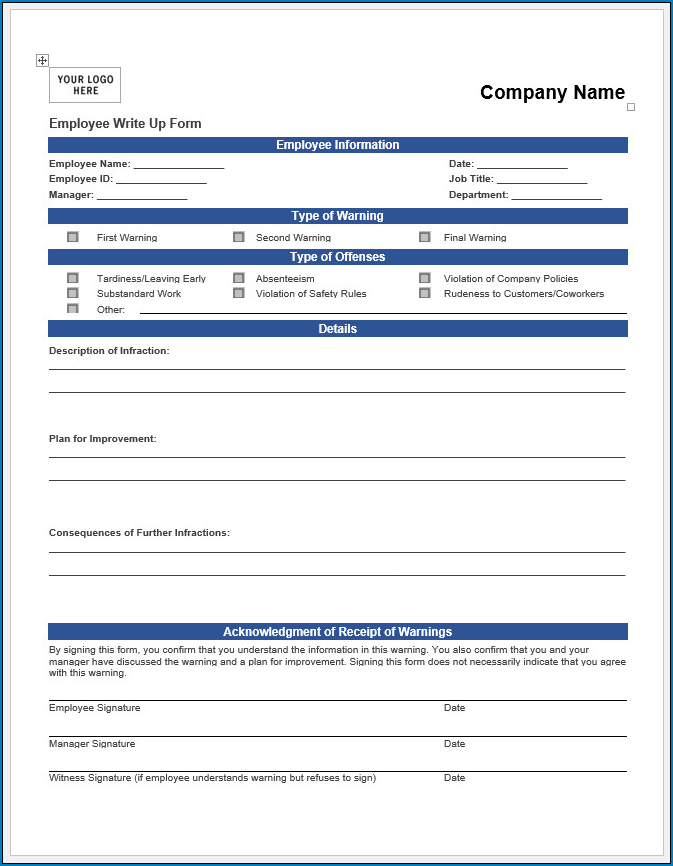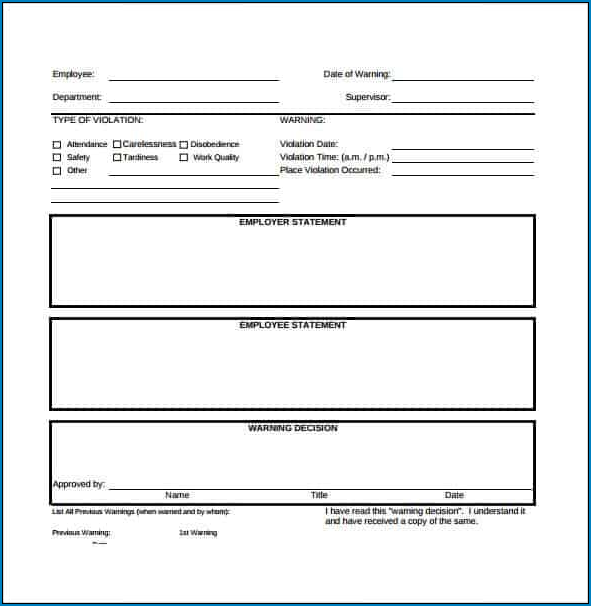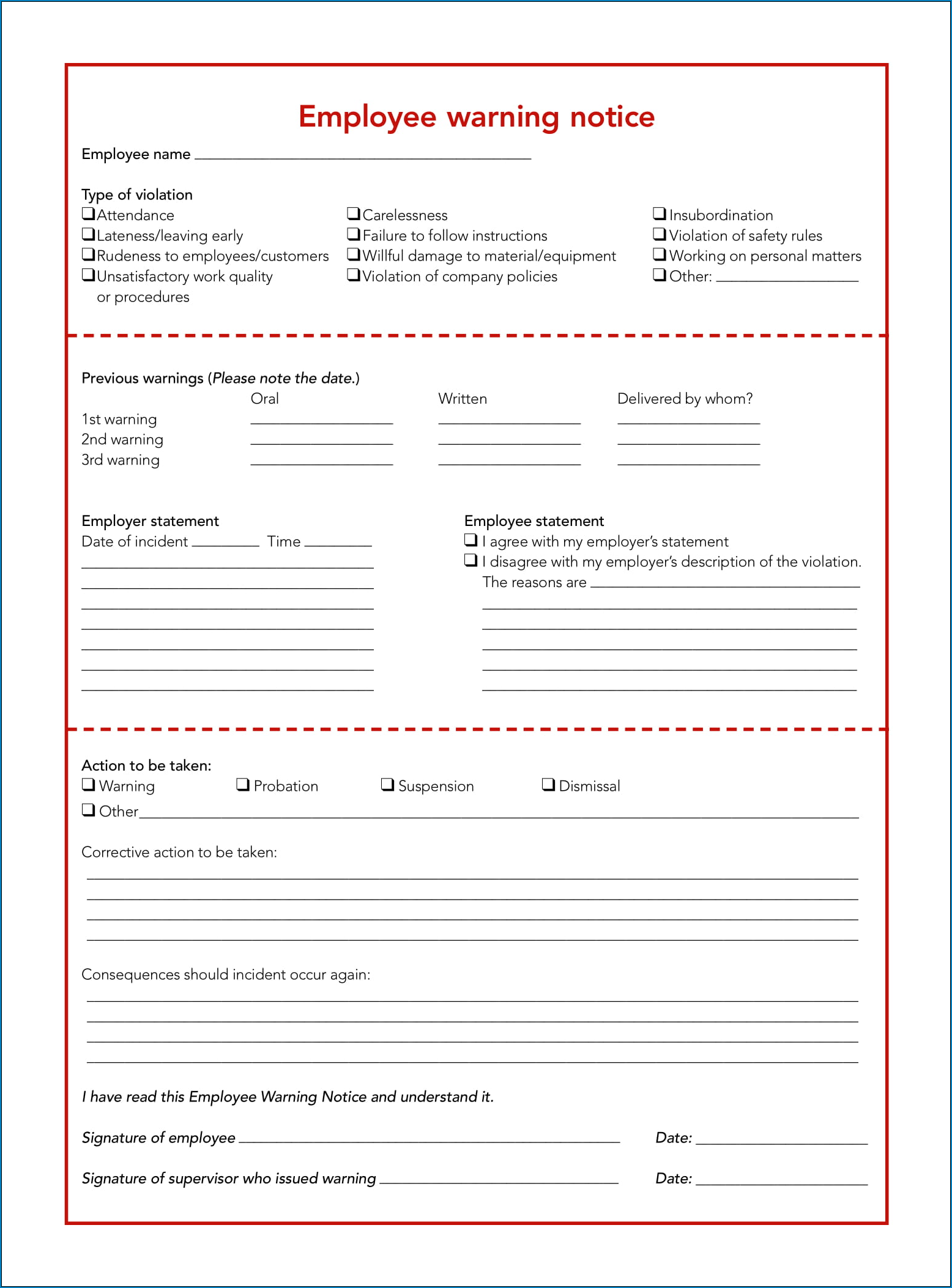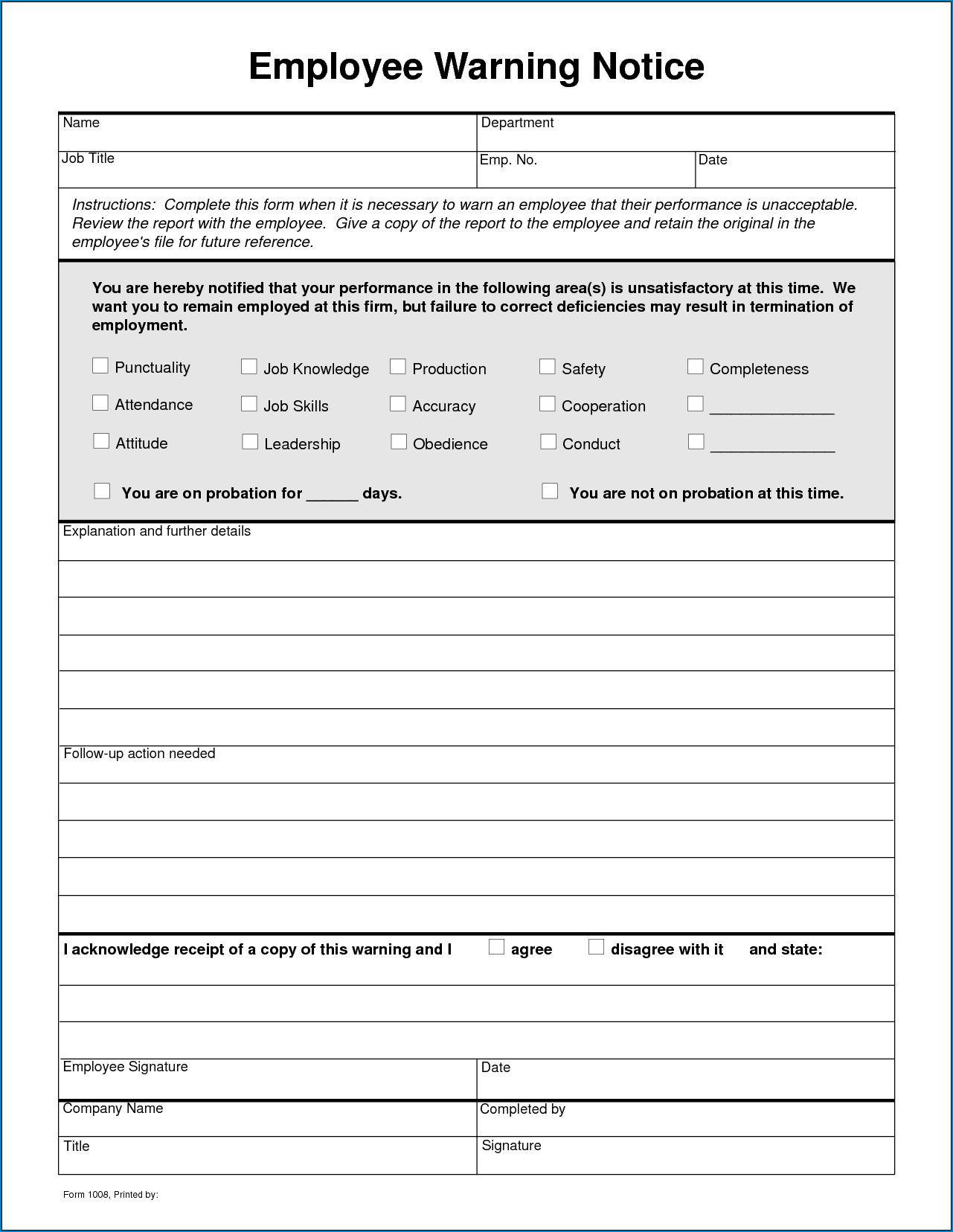
Employee write-up forms serve as a crucial tool for documenting and addressing employee misconduct, performance issues, or policy violations within an organization.
These formal written records create a paper trail that is essential for progressive discipline and legal protection. By documenting specific incidents, outlining expectations for improvement, and providing formal warnings, employee write-up forms help ensure fairness, accountability, and a factual basis for future HR actions such as a performance improvement plan (PIP) or termination.
What is an Employee Write-Up Form?
An employee write-up form, also known as an employee disciplinary form or employee warning form, is a document used by employers to record instances of misconduct, poor performance, or policy violations by an employee. It serves as a written record of specific incidents and provides a formal warning within a progressive discipline process.
Employee write-up forms are essential for HR departments to address behavior or performance issues in a structured manner. These forms help establish clear expectations for improvement, document the employee’s acknowledgment of the problem, and provide a basis for future HR actions if the behavior or performance does not improve.
Samples of Employee Write-Up Form:




The Purpose of Employee Write-Up Forms
Employee write-up forms serve multiple purposes within an organization. They are not only a documentation tool but also a communication mechanism between employers and employees. By outlining specific incidents of concern and expectations for improvement, these forms help set the tone for corrective action and provide a roadmap for employees to address performance issues.
Moreover, employee write-up forms play a critical role in the progressive discipline process. They enable employers to follow a structured approach to addressing misconduct or poor performance, providing employees with the opportunity to improve before facing more severe consequences. This process helps maintain fairness and consistency in dealing with employee issues.
Key Elements of an Employee Write-Up Form
When creating an employee write-up form, several key elements should be included to ensure its effectiveness and comprehensiveness. These elements help provide a clear and detailed account of the incident, set expectations for improvement, and document the employee’s response to the issue.
- Employee Information: Include the employee’s name, job title, department, and supervisor’s name to ensure accurate identification and record-keeping.
- Date and Time of Incident: Specify the date, time, and location of the incident or violation to establish a timeline of events.
- Description of Incident: Provide a detailed description of the misconduct, performance issue, or policy violation to clearly communicate the nature of the problem.
- Previous Warnings: Note if the employee has received any previous warnings or counseling for similar issues to indicate a pattern of behavior or performance concerns.
- Expectations for Improvement: Clearly outline the expectations for improvement and the consequences of non-compliance to set a clear path for corrective action.
- Employee Comments: Allow space for the employee to provide their comments or explanation regarding the incident to ensure a two-way communication process.
Benefits of Using Employee Write-Up Forms
Employee write-up forms offer several benefits to both employers and employees when used effectively. These forms help promote transparency, accountability, and communication in addressing performance issues and misconduct within the organization. Here are some key benefits of using employee write-up forms:
- Clear Expectations: Employee write-up forms set clear expectations for improvement and consequences, helping employees understand the impact of their behavior or performance issues.
- Documentation: These forms create a documented record of incidents, warnings, and actions taken, which can be used as evidence in legal proceedings or disputes.
- Legal Protection: By following a structured process with employee write-up forms, employers can protect themselves from potential legal risks or liabilities.
- Performance Improvement: Employee write-up forms provide employees with an opportunity to address performance issues, receive feedback, and improve their skills or behavior.
- Consistency: Using employee write-up forms ensures a consistent approach to addressing employee issues, avoiding claims of discrimination or favoritism.
How to Document Employee Write-Up Forms
When documenting employee write-up forms, HR departments and managers should follow a structured approach to ensure accuracy, consistency, and fairness. Proper documentation is essential in creating a factual basis for future HR actions and legal protection. Here are some best practices for documenting employee write-up forms:
- Be Timely: Document incidents as soon as they occur to capture accurate details and avoid memory bias.
- Be Objective: Use specific language and avoid subjective opinions to maintain an unbiased record of the incident.
- Be Comprehensive: Include all relevant information, such as dates, times, witnesses, and actions taken, to provide a complete picture of the incident.
- Seek Confirmation: Have the employee review and sign the write-up form to acknowledge receipt and understanding of the content.
- Store securely: Keep employee write-up forms confidential and store them securely to protect sensitive information.
Employee Write Up Form | Word – Download